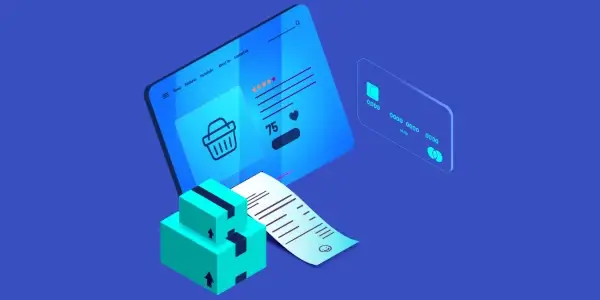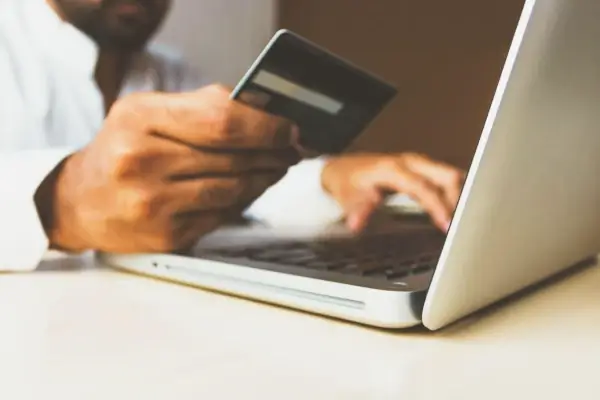
Are you considering taking payments online? Business is booming. E-commerce now accounts for $870 billion annually in the US alone, a 50.5% increase since 2019.
But with more money comes more problems. In 2022, the Federal Trade Commission announced that 8.8 billion dollars were lost to fraud, with identity theft as the number one cause.
Clearly, it has never been more lucrative - and more dangerous - to be in business online. Today we will look at five best practices for keeping your business safe.
Benefits of Security
In today's online landscape, security is everything. Whether switching eCommerce platforms or investing in a new virtual telephone number, business owners are using everything at their disposal to protect against hackers.
After all, it is often the retailers themselves who pay the price for fraud. This frequently comes in the form of chargebacks. This is when a customer sees something on their statement they don't recognize, calls their bank, and gets the charge reversed.
In addition, customers are more wary than ever online. And with the rise of Amazon, Asos, and eBay, they want assurance that your business can provide the safety they need!
As a vendor, it is your job to create a trusted environment where customers feel safe to spend their money. Fortunately, not only does following best practices online result in greater security, but it can also mean reduced friction and an improved customer experience.

1. Protect Yourself
The first step to making your online payment processing as secure as possible starts at home. Protecting your software and websites from fraudsters is a cornerstone of life online, and this is especially true when you are running a business!
Websites (especially those involved in financial transactions) are popular targets for bad actors. The following are the key components to keeping your software and website safe.
- Vulnerability monitoring: Subscribing to a vulnerability monitoring service is like hiring a bodyguard for your website. It will scan your whole network for backdoors, viruses, and malware.
- Firewall as a service: One of the simplest ways to get a great firewall for your website is to rent one. Your firewall is a barrier that blocks access to your private internal network and any outside intruders that may want to access information. It monitors anything coming in or out of your network. Purchasing a Firewall as a Service means all the hassle is taken away.
- Keep your software up to date: This last one is simple but important. Whenever any software company updates its product, they often fix security flaws. Updating your software means that you're protecting yourself against the latest dangers.
Using these three strategies will help secure your website against bad actors.
2. Encrypt Your Data
Next, let's think about the payments themselves. TLS and SSL are two kinds of security technology that defends any information moving between a user and your website. So whenever a customer sends you payment information, TLS and SSL can help make this process safer.
The way they work is through a process called encryption. This means that any information moving between the business and the user is made unintelligible, and only authorized parties can unscramble it.
Encryption is a fundamental part of keeping data safe. It is used in WhatsApp messaging, VoIP phone features, and of course, online payment security.
To use this service, a website buys an encryption certificate such as SSL. Each certificate includes a pair of keys. Once you install the certificate, whenever a customer connects to your website, the website sends them a copy of the SSL certificate containing a key.
This establishes a secure connection between the website and the browser, where information is scrambled on one end and unscrambled on the other.
This way, no one can intercept the data and steal your customer's information!

3. Authenticate Payments
At the end of the day, having a well-defended website and encrypted data is no good if your customer isn't who they say they are.
Online payment fraud is mostly identity theft, where a fraudster uses a victim's card details to make a purchase or transfer money. And the worst thing is, they don't even have to have the real card. All they need are the card details, which are often digitally stored (and stolen).
Authorization describes a set of strategies that prove the buyer is who they say they are. Here we've compiled the most secure methods:
Tokenization
Tokenization is a form of encryption where sensitive data is replaced with a non-sensitive substitute, known as a token. Two popular examples of tokenization are Google Wallet and Apple Pay.
With these services, a customer buys a token from the service rather than giving a business your bank details over the Internet. Each token has a unique signature used to verify the authenticity of the user.
Biometric authentication
Biometric authentication uses biological traits to prove a customer's identity. These traits can include fingerprints, facial features, voices, or retinas.
Examples of this include Apple's TouchID. When a customer wants to make a payment, biometric authentication will prove that the real person is on the other end.
3DS2
Finally, 3DS2 requires customers to provide additional information to the card issuer when making payments. You will have seen this technique whenever you buy something online and a box pops up from your bank, asking for a password.
The benefit of 3DS2 is that it simplifies the payment process. It reduces the chances that customers will become frustrated and abandon their cart. Also, because the authentication happens through the card issuer, they hold all the liability if a fraudster succeeds!
In cases where users may encounter difficulties or issues with the payment process, such as incorrect authentication, it's essential to have effective troubleshooting payment processing in place to ensure a smooth and secure customer experience.
4. Use Transaction Monitoring
Using multi-step web transaction monitoring in online payment processing refers to continuously monitoring and analyzing user interactions and transactions on a website or web application during the payment process. This specific type of transaction monitoring is crucial in ensuring the smooth and secure flow of payment transactions on e-commerce platforms or any other websites involving online payments. Here are the key aspects of the role of web transaction monitoring in online payment processing:
- Performance and Reliability: Web transaction monitoring ensures the payment process runs smoothly without any performance issues or interruptions. It tracks response times, server availability, and other metrics to identify and address any bottlenecks that could affect the user experience during payment.
- User Experience: Providing a seamless and user-friendly payment experience is essential for customer satisfaction. Web transaction monitoring helps detect issues that users might face during the payment process, such as errors, timeouts, or broken links. By identifying and resolving these problems, businesses can improve the overall user experience.
- Real-time Alerts: Web transaction monitoring systems can generate alerts when suspicious activities or errors are detected. This allows the appropriate personnel to take immediate action and prevent potential fraud or technical issues before they escalate.
- Load Testing and Scalability: Web transaction monitoring can simulate heavy user loads during peak times to assess the system's scalability and identify any potential issues with the payment process under high-traffic conditions.
- Third-party Integration Monitoring: Many online payment processing systems involve integrations with third-party services or APIs. Web transaction monitoring extends its scope to include monitoring the performance and security of these integrations to ensure smooth interactions and prevent potential vulnerabilities.
5. Use Fraud Detection Software
Fraud detection software uses machine learning algorithms to spot user patterns online. This way, any patterns consistent with fraudulent activity can be spotted before it even happens. If vulnerability monitoring is preventative, fraud detection functions in real time to defend your payment processing.
Take, for instance, a phishing technique called domain spoofing. This is when a fraudster pretends to be from a domain you trust to gain sensitive information.
Say you do a lot of business with a company in Singapore. You get an email from a domain that looks identical to your customer. You see their name, you recognize the .sg domain country as Singapore, and so, of course, you respond to their request.
Fraud detection software is trained in domain fraud monitoring and can help stop this kind of activity in its tracks.

6. Stay Compliant
The final way to ensure the security of your online payment processing is to bring your business in line with current security standards. Indeed, many big debit card brands require that you comply with security standards before they allow you to process payments from their banking partners.
PCI DSS
The big online security standard that most businesses need to meet is called the PCI DSS. This stands for Payment Card Industry Data Security Standard. It was created to oversee online payment processes and ensure vendors and customers are as secure as possible.
In a changing online landscape, having your business PCI DSS certified is a great way to ensure you are up to date with security trends. It also assures your customers that you are a trustworthy payment processor.
The PCI DSS is good because it requires everyone involved to meet 15 different standards for online best practices. These include:
- Controlling access to data
- Testing networks for intrusions and malware
- Building secure networks and systems
- Protecting account data
- Responding quickly in the event of fraudulent activity
For industries that struggle to get approved by traditional processors, a high-risk merchant service provider is an excellent solution.
SOX compliance requirements
Another set of compliance standards that includes several cybersecurity measures is the SOX compliance requirements. Standing for the Sarbanes-Oxley Act, the SOX is a US law that applies to all public companies. It is quickly becoming the model for governmental oversight in online finance and includes a number of cybersecurity measures.
This is important to anyone processing payments online because non-compliance in the US can result in severe fines and even imprisonment. The SOX requirements include:
- Carrying out a Cyber SOX risk assessment
- Identifying disclosure controls and policies
- Implementing Cybersecurity Controls using a reliable framework
- Monitoring and testing those controls
In short, the PCI DSS and SOX provide businesses with a roadmap to secure payment processing. Both include on-site and online audits to check your business's security. Together, these measures will give you the credentials to prove to your customers that you mean business!
The Final Analysis
And there you have it! In the end, keeping your business safe online is a multi-layered process. Hackers have an ever-evolving set of tools to scam businesses out of money. Add increased pressure from governments and consumers, and this can seem like a complicated process.
However, investing in third-party services, such as FWaaS, or vulnerability monitoring services, can make that process a whole lot simpler. That way, you can sit back and reap the rewards of online sales.
X


 Copyright 2000-2025, WebSitePulse. All rights reserved.
Copyright 2000-2025, WebSitePulse. All rights reserved.